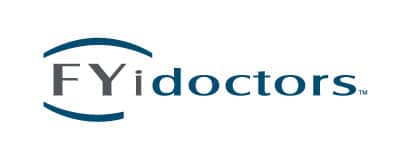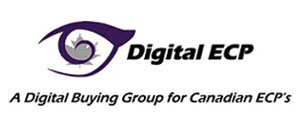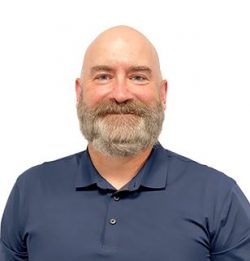
The second event of the “Changing Landscapes: Opportunities & Options for Canadian ECPs” will focus on Selling & Buying a Practice and will be held Monday November 1st (7:30 PM Eastern).
The Canadian market has experienced transformational change in the past year.
Major players have had substantial capital injection and new Canadian market entrants are making their play for market share, creating more opportunities and options for Canadian ECPs.
Join leaders and spokespersons from the world of independent optometry supported by B+L and major eye care groups/organizations including IRIS, FYidoctors, Vision Alliance Corporation, OSI/SOI, Eye Recommend and, new to Canada, Specsavers. ROI Corporation, Canada’s leading health practice brokerage will also share their experience.
This event is a must-attend for any practitioner looking to exit their business, start a new practice or formulate a strategic partnership.
Speaker List Includes:
- Jackie Joachim, Chief Operating Officer, ROI Corporation
- Dr. Daryan Angle, VP Business Development, IRIS Group
- Dr. Wes McCann, Central Optometry, ON, Eye Recommend
- Dr. Michael Naugle, VP Optometric Partnerships, FYidoctors
- Gord McFarlane, Managing Director of Corporate Development, FYidoctors
- Dr. Skylar Feltis, YXE Vision Group, SK, OSI Group
- Dr. Warren Toews, YXE Vision Group, SK, OSI Group
- Dr. Trevor Miranda, Cowichan Eyecare, BC, Independent Practice
- Dr. Robert Allaway, Chief Optometry Officer, Vision Alliance Corporation
- Mike Protopsaltis, Partnerships Director, Specsavers
The event series will be moderated by Roxanne Arnal, OD and Certified Financial Planner (TM), bringing an informed and unique perspective to the events.
Event registration is now open. Click Here for Details.
PREMIER SPONSORS
 |
 |
 |
|
 |
 |
 |
PARTNER & FRIEND SPONSORS FOR THIS EVENT
 |
 |
 |
|
 |
 |
 |
Follow up Events:
The final event in the series will be held Monday November 8th 7:30 PM (Eastern).
Career Pathfinders| Making Informed Choices (November 8th)
Career options and opportunities for both young and experienced ODs have never been greater as new organizations offering unique business models enter the market and established entities respond to the changing environment.
Click Here for Detailed Information.
Registration for the first event Monday October 25th, “Technology Drivers of Change” is open.
Click here for detailed information on this event.
Click here to register for any of the Changing Landscape Events

















 For many years, the Ontario College of Optometrists (COO) had very restrictive regulations that forced an antiquated pricing mechanism and forbade association among Optometrists, Opticians and corporate entities.
For many years, the Ontario College of Optometrists (COO) had very restrictive regulations that forced an antiquated pricing mechanism and forbade association among Optometrists, Opticians and corporate entities.

 At 62, Phil was starting to think about retirement. His store, Optix, was an attractive street-level store on Marine Drive in Vancouver, and he decided it was time to start thinking about selling the store. Since exit planning can often take 5-7 years or longer to implement, Phil knew he needed to find a strategy soon; “You have to prepare for this years before and have a plan and start early, and not wait until the time you want to retire”.
At 62, Phil was starting to think about retirement. His store, Optix, was an attractive street-level store on Marine Drive in Vancouver, and he decided it was time to start thinking about selling the store. Since exit planning can often take 5-7 years or longer to implement, Phil knew he needed to find a strategy soon; “You have to prepare for this years before and have a plan and start early, and not wait until the time you want to retire”. Prior to the partnership, Phil did not have an in-store optometrist. He relied upon referrals to local ophthalmologists and walk-in prescriptions. Increasingly, he observed that customers increasingly would buy their frames at the clinic where they got their exams instead of coming back to his store. He knew he would keep more customers with an optometrist at his location.
Prior to the partnership, Phil did not have an in-store optometrist. He relied upon referrals to local ophthalmologists and walk-in prescriptions. Increasingly, he observed that customers increasingly would buy their frames at the clinic where they got their exams instead of coming back to his store. He knew he would keep more customers with an optometrist at his location.

 Dr. Beverley bought her Barrie, ON practice after the former owner suffered health issues that forced her to stop working. Subsequently, a business partner purchased half the practice, and together, they moved to successively larger offices establishing themselves as a progressive practice with happy staff and satisfied patients.
Dr. Beverley bought her Barrie, ON practice after the former owner suffered health issues that forced her to stop working. Subsequently, a business partner purchased half the practice, and together, they moved to successively larger offices establishing themselves as a progressive practice with happy staff and satisfied patients.
 Dr. Beverley continues to work, on average, less than 3 days per week at the Barrie, Ontario location, and has a 50% stake in the IRIS practice.
Dr. Beverley continues to work, on average, less than 3 days per week at the Barrie, Ontario location, and has a 50% stake in the IRIS practice.
